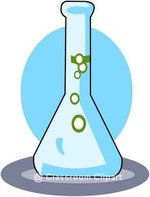Argon
|
|
Template:Elementbox header Template:Elementbox series Template:Elementbox groupperiodblock Template:Elementbox appearance img Template:Elementbox atomicmass gpm Template:Elementbox econfig Template:Elementbox epershell Template:Elementbox section physicalprop Template:Elementbox phase Template:Elementbox meltingpoint Template:Elementbox boilingpoint Template:Elementbox heatfusion kjpmol Template:Elementbox heatvaporiz kjpmol Template:Elementbox heatcapacity jpmolkat25 Template:Elementbox vaporpressure katpa Template:Elementbox section atomicprop Template:Elementbox crystalstruct Template:Elementbox oxistates Template:Elementbox electroneg pauling Template:Elementbox ionizationenergies4 Template:Elementbox atomicradius pm Template:Elementbox atomicradiuscalc pm Template:Elementbox covalentradius pm Template:Elementbox vanderwaalsrad pm Template:Elementbox section miscellaneous Template:Elementbox magnetic Template:Elementbox thermalcond wpmkat300k Template:Elementbox speedofsound mps Template:Elementbox cas number Template:Elementbox isotopes begin Template:Elementbox isotopes stable Template:Elementbox isotopes decay Template:Elementbox isotopes stable Template:Elementbox isotopes decay Template:Elementbox isotopes stable Template:Elementbox isotopes decay Template:Elementbox isotopes end Template:Elementbox footer
Argon is the chemical element in the periodic table that has the symbol Ar and atomic number 18. The third noble gas, in group 18, argon makes up about 1% of the Earth's atmosphere.
| Contents |
Notable characteristics
Argon is 2.5 times as soluble in water as nitrogen which is approximately the same solubility as oxygen. This highly stable chemical element is colorless and odorless in both its liquid and gaseous forms. There are no known true chemical compounds that contain argon, one of the reasons it was formerly called an inert gas. The creation of argon hydrofluoride (HArF), a highly unstable compound of argon with fluorine, was reported by researchers at the University of Helsinki in 2000, but has not been confirmed.
Although no chemical compounds of argon are presently confirmed, argon can form clathrates with water when atoms of it are trapped in a lattice of the water molecules. Theoretical calculations on computers have shown several Argon compounds that should be stable but for which no synthesis routes are currently known.
Applications
It is used in lighting since it will not react with the filament in a lightbulb even under high temperatures and other cases where diatomic nitrogen is an unsuitable (semi-)inert gas. Other uses;
- Used as an inert gas shield in many forms of welding, including mig and tig (where the "I" stands for inert).
- as a non-reactive blanket in the manufacture of titanium and other reactive elements.
- as a protective atmosphere for growing silicon and germanium crystals.
- Argon-39 has been used for a number of applications, primarily ice coring. It has also been used for ground water dating.
- Cryosurgery procedures such as cryoablation uses liquefied argon to destroy cancer cells.
Argon is also used in technical SCUBA diving to inflate the dry suit, due to its nonreactive, heat isolating effect.
History
Argon (Greek argos meaning "inactive") was suspected to be present in air by Henry Cavendish in 1785 but was not discovered until 1894 by Lord Rayleigh and Sir William Ramsay.
Occurrence
This gas is isolated through liquid air fractionation since the atmosphere contains only 0.934% volume of argon (1.29% mass). The Martian atmosphere in contrast contains 1.6% of Ar-40 and 5 ppm Ar-36. In 2005, the Huygens probe also discoverd the presence of Ar-40 on Titan, the largest moon of Saturn [1] (http://www.esa.int/esaCP/SEMHB881Y3E_index_0.html).
Compounds
Before 1962, argon and the other noble gases were generally considered to be chemically inert and not able to form compounds. However, since then, scientists have been able to force the heavier noble gases to form compounds. In 2000, the first argon compounds were formed by researchers at the University of Helsinki. By shining ultraviolet light onto frozen argon containing a small amount of hydrogen fluoride, they were able to form argon hydrofluoride (HArF).
Isotopes
The main isotopes of argon found on Earth are Ar-40, Ar-36, and Ar-38. Naturally occurring K-40 with a half-life of 1.250 x 109 years, decays to stable Ar-40 (11.2%) by electron capture and by positron emission, and also transforms to stable Ca-40 (88.8%) via beta decay. These properties and ratios are used to determine the age of rocks.
In the Earth's atmosphere, Ar-39 is made by cosmic ray activity, primarily with Ar-40. In the subsurface environment, it is also produced through neutron capture by K-39 or alpha emission by calcium. Argon-37 is created from the decay of calcium-40 as a result of subsurface nuclear explosions. It has a half-life of 35 days. Template:Chem clipart
References
- Los Alamos National Laboratory – Argon (http://periodic.lanl.gov/elements/18.html)

